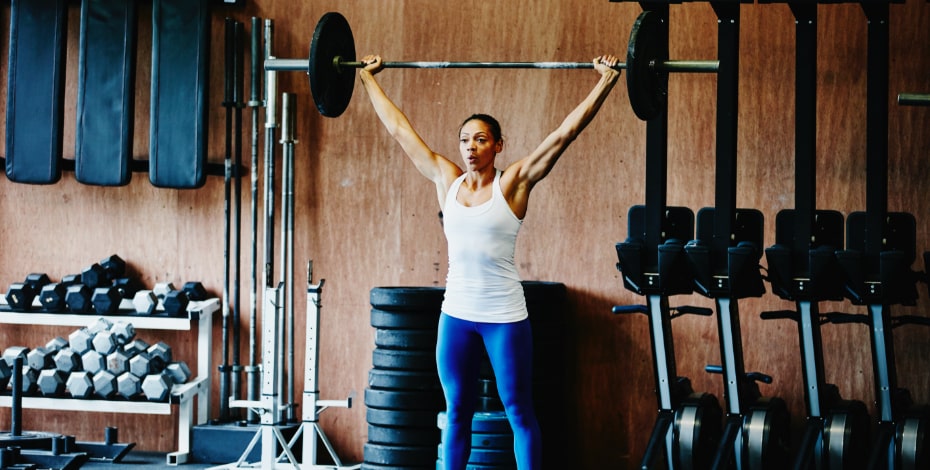
Pelvic floor support in women who lift weights

A discussion with 2020 Physiotherapy Research Foundation Seeding Grant recipient Lori Forner about her research.
As a physiotherapist in private practice, Lori Forner has always contributed to the Physiotherapy Research Foundation.
Now a PhD student, she is delighted to be one of last year’s recipients of a PRF Seeding Grant for her research into whether heavy weightlifting is a risk factor for pelvic organ prolapse in women who have given birth.
It’s a topic rooted in her own physiotherapy practice, which is focused on pelvic floor rehabilitation, and provides her with the opportunity to start the development of evidence-based recommendations for strength training in women.
‘Physiotherapists are always promoting physical activity and we know that strength training is really important for overall health.
'It helps to maintain weight.
'It helps with strength.
'It helps with balance.
'We’ve got quite a bit of research demonstrating how important it is for bone density, especially in terms of things like osteoporosis.
'However, in the world of women’s health, heavy lifting is also listed as a risk factor for certain types of pelvic floor dysfunctions and one in particular is pelvic organ prolapse,’ says Lori, who also hosts The Pelvic Health Podcast.
‘We really don’t have enough research in that field.
'A lot of the research was based on occupational lifting.’
Part of the problem, says Lori, who also has a degree in exercise science, is that no one has ever really defined what ‘heavy’ is.
‘Somewhere along the lines it has ended up being that women who might be at risk of pelvic floor dysfunction shouldn’t lift more than 15 kilos,’ she says.
But as a clinician she has many clients who love to participate in F45 or CrossFit or they have a job that has high demands or they’ve got children—all activities that commonly involve lifting more than 15 kilograms.
‘These women already have a pelvic floor dysfunction or they are worried about having one after having a baby.
'I really wanted answers to work out how to better advise them on strength training programs and resistance exercises that we were giving,’ Lori says.
Her questions led her to start a PhD program at The University of Queensland, where she is working with Dr Michelle Smith, Dr Emma Beckman and Professor Paul Hodges to understand the effects of heavy weightlifting on pelvic organ support in women who have delivered at least one baby vaginally.

Lori Forner is investigating how heavy weightlifting may affect the pelvic floor in women.
A vaginal delivery is one of the biggest risk factors for women in developing pelvic floor dysfunction such as urinary incontinence, anal incontinence or pelvic organ prolapse.
Lori’s research will compare two groups of physically active women who have had vaginal deliveries: one with women who lift heavy weights—defined in this study as more than 80 per cent of their body weight at least once a week—and the other with women who don’t lift more than 15 kilograms.
None of the women in the study has symptoms of pelvic organ prolapse.
In both groups, the amount of pelvic organ descent, the structural integrity of the pelvic floor and other measures of pelvic floor function will be measured using 3D/4D transperineal ultrasound.
Other information such as the amount of intra-abdominal pressure that can be generated on command as well as factors such as age, weight, family history and birth history will also be collected.
Lori hopes that the data collected from the study will provide a clearer picture of how heavy weightlifting can affect the pelvic floor.
‘We might find that women who lift heavy weights have more pelvic organ descent even though they don’t have symptoms.
'Or we might not find that there’s a difference between each group,’ she says.
Other risk factors, such as age or weight, might also emerge as important predictors of pelvic floor function.
At the very least, Lori hopes that the study, along with her PhD program, will provide some understanding of pelvic floor support in women who are physically active and better guidance for exercises that involve strength training in these women.
‘I really hope that down the track it will help us to start developing evidence-based recommendations for strength training in women, especially those who have risk factors for pelvic floor dysfunction, including vaginal and instrument-assisted births, menopause and genetic predisposition,’ she says.
Lori says her experience as a clinician in private practice means that she always thinks of her research in terms of how it might change clinical practice.
‘I cannot imagine getting into research without having been a clinician and without continuing to be a clinician because that’s where all of my ideas and little things that I change tend to come from—what I’m seeing in the clinic and the fact that I know what I’m doing means I will always have that outlook of “How does this change practice in our clinical world?’’,’ she says.
As for her future in research, Lori says the questions keep coming.
‘I definitely have learned that the more of this research I do, the more questions I have,’ she says.
© Copyright 2025 by Australian Physiotherapy Association. All rights reserved.





